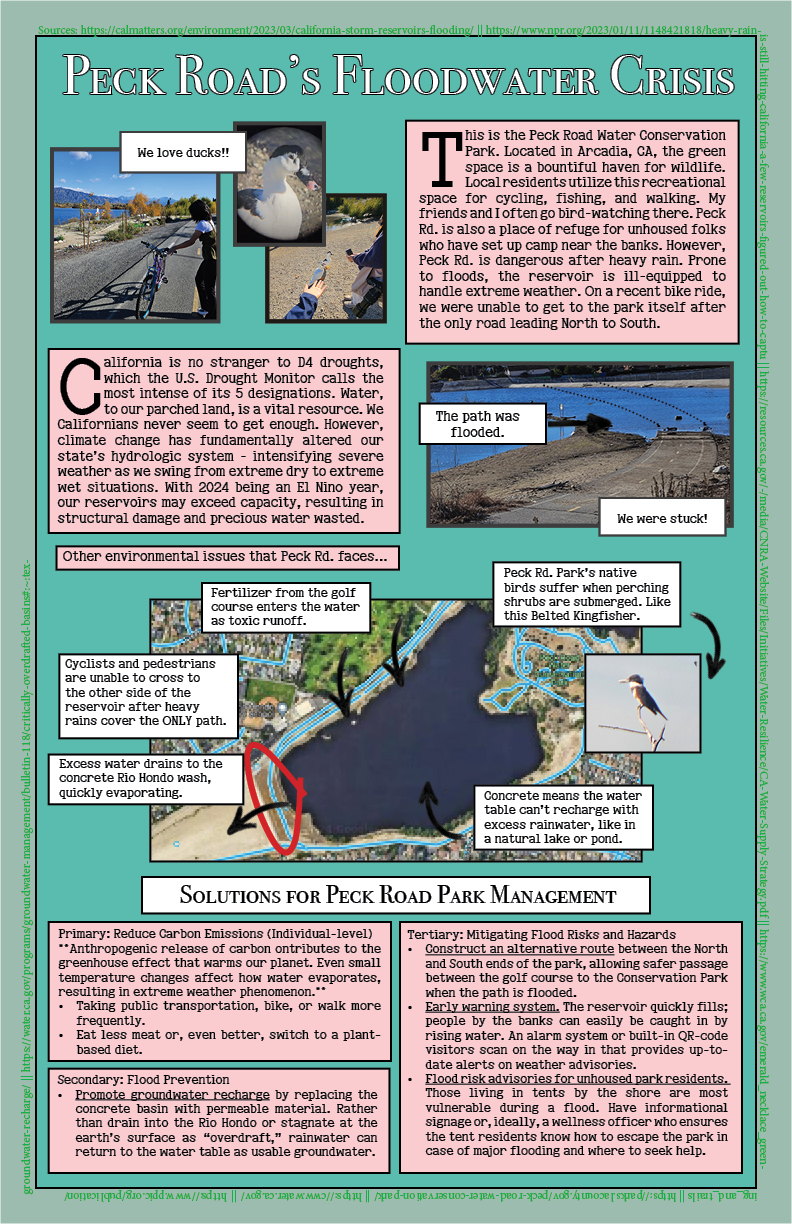Climate change has altered California’s drought-accustomed hydrologic system, causing severe weather events that vary from extremely dry to extremely wet. When reservoirs exceed maximum capacity, structural damage ensues—and precious water is wasted.
At Peck Road Water Conservation Park in Arcadia, CA, rainwater sits in an artificial concrete basin; it’s vital for native birds like kingfishers and egrets. However, recent storms left the only path leading North/South submerged in over a foot of water for months! Cyclists, pedestrians, and vulnerable unhoused residents were unable to get to the other side.
I was appalled by this issue and came up with three tiers of solutions.
Primary: Address climate change by reducing carbon emissions.
Secondary: Prevent flooding by replacing the concrete basin with permeable material, allowing excess rainwater to become usable groundwater. Governor Newsom’s 2022 Water Resilience Portfolio outlines groundwater recharge plans and an $8 billion budget for state leaders to modernize water infrastructure.
Tertiary: Minimize flood risk to humans by 1) Building an alternative route leading North/South at higher elevation. 2) Developing an early flood warning system. 3) Implement outreach programs, so unhoused folks living near the reservoir banks know the dangers of rising floodwater and where to seek help.
Contact us
Thank you for your interest in contacting Future Engineers. We look forward to connecting with you!
General Inquiries
support@futureengineers.orgSponsorship Inquiries
sponsor@futureengineers.org
